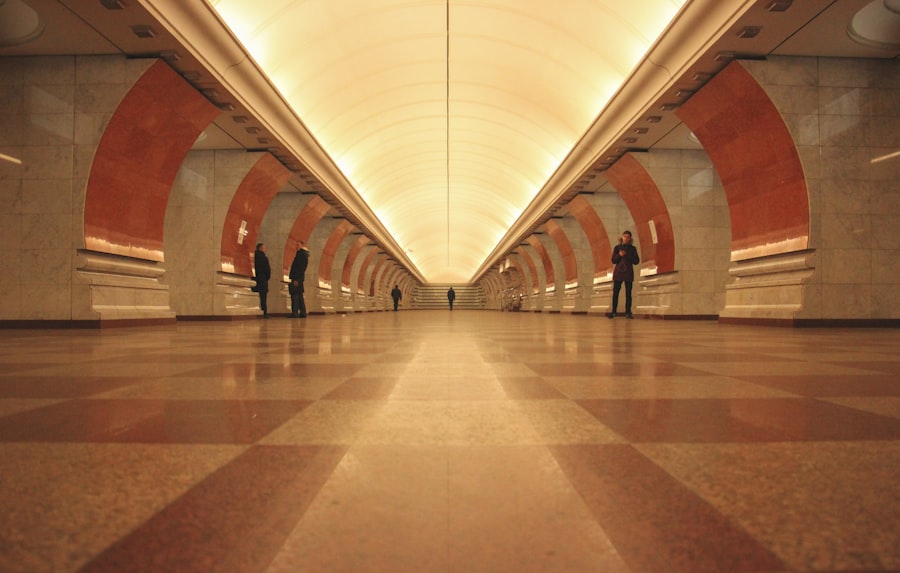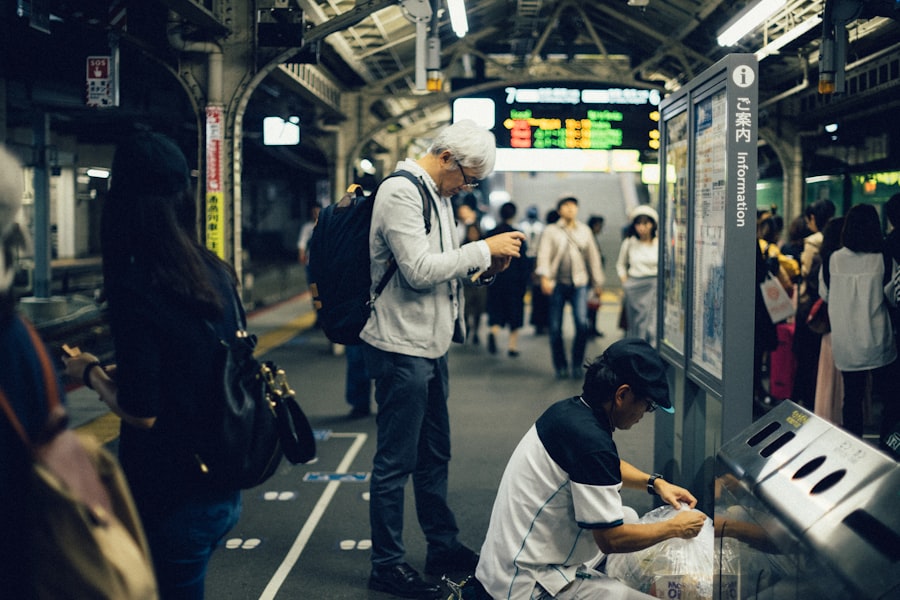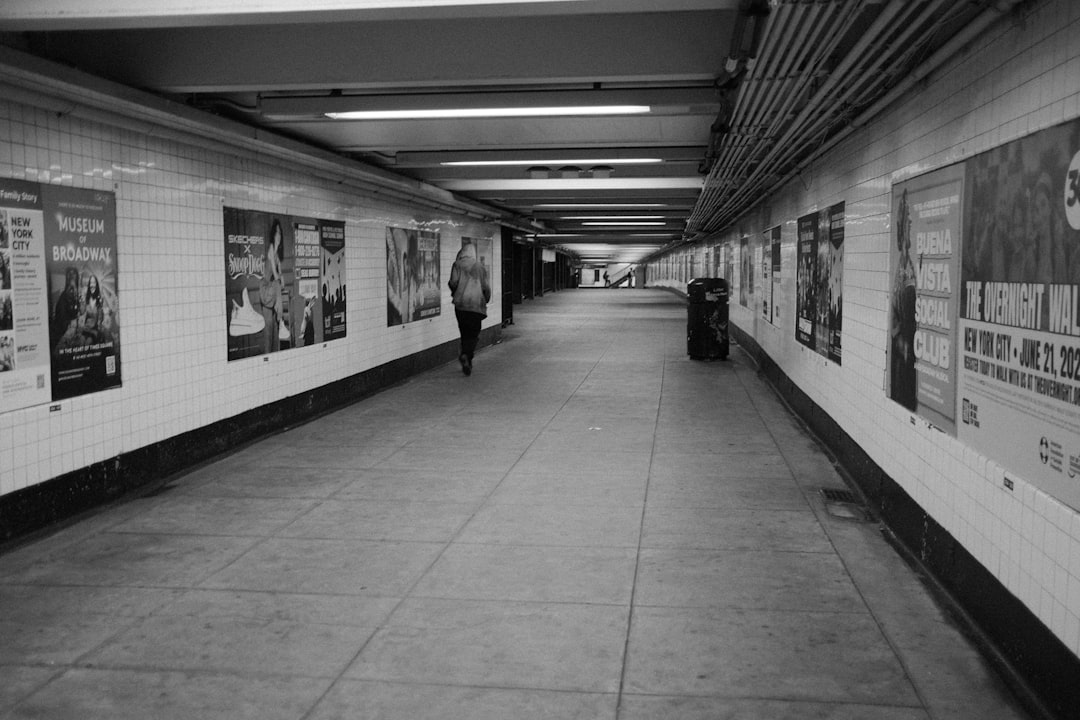The New York City subway system, a sprawling network that serves millions of commuters daily, is a vital artery of urban life. With its inception dating back to 1904, the subway has undergone numerous transformations, yet it remains a critical component of the city’s infrastructure. Maintenance of this extensive system is not merely a logistical necessity; it is a complex challenge that requires constant attention and innovation.
The subway’s maintenance encompasses everything from track repairs and signal upgrades to the upkeep of rolling stock and station facilities. As the lifeblood of New York City, the subway’s reliability and efficiency are paramount for the daily functioning of the metropolis. However, maintaining such an extensive system is fraught with challenges.
Aging infrastructure, budget constraints, and increasing ridership all contribute to a maintenance landscape that is often reactive rather than proactive. The need for a comprehensive approach to maintenance is more pressing than ever, as the subway must adapt to the demands of modern urban life while ensuring safety and efficiency. This article will explore the current challenges facing NYC subway maintenance, the importance of enhancing the commuter experience, and potential solutions that could pave the way for a more reliable and user-friendly transit system.
Key Takeaways
- NYC Subway Maintenance is crucial for ensuring a safe and efficient commuter experience.
- Current challenges include aging infrastructure, equipment, and lack of resources for staff training.
- Enhancing commuter experience is important for customer satisfaction and increasing ridership.
- Implementing technology can improve maintenance efficiency and reduce downtime.
- Investing in infrastructure and equipment is necessary for long-term sustainability and reliability.
Current Challenges and Issues
The challenges confronting the NYC subway system are multifaceted and deeply rooted in its history. One of the most significant issues is the aging infrastructure, which has been a topic of concern for decades. Many components of the subway system, including tracks, signals, and stations, are well past their intended lifespan.
This deterioration not only leads to frequent service disruptions but also poses safety risks for commuters. The Metropolitan Transportation Authority (MTA) has made strides in addressing these issues, yet the sheer scale of the system makes it difficult to implement widespread improvements quickly. In addition to aging infrastructure, budgetary constraints present another formidable challenge.
The MTA operates under tight financial limitations, which can hinder its ability to allocate sufficient funds for maintenance and upgrades. As ridership continues to grow, the demand for reliable service increases, placing additional pressure on an already strained budget. This financial reality often results in difficult decisions about where to allocate resources, leading to a cycle of deferred maintenance that exacerbates existing problems.
Importance of Enhancing Commuter Experience

Enhancing the commuter experience is essential for fostering public trust and encouraging greater use of the subway system. A positive experience can significantly influence how commuters perceive public transportation and its role in their daily lives. When riders encounter delays, overcrowding, or unclean conditions, their overall satisfaction diminishes, which can lead to a decline in ridership.
Conversely, a well-maintained and efficient subway system can enhance the quality of life for New Yorkers by providing a reliable means of transportation that connects them to jobs, education, and leisure activities. Moreover, improving the commuter experience is not just about comfort; it also has broader implications for urban mobility and sustainability. A more efficient subway system can reduce reliance on personal vehicles, thereby decreasing traffic congestion and lowering carbon emissions.
By prioritizing enhancements that make commuting more pleasant and efficient, city planners can encourage more residents to choose public transportation over driving, contributing to a greener urban environment.
Implementing Technology for Maintenance Efficiency
| Technology | Benefits | Challenges |
|---|---|---|
| CMMS (Computerized Maintenance Management System) | Improved work order management, asset tracking, and preventive maintenance scheduling | Initial setup and training required |
| Predictive Maintenance Sensors | Early detection of equipment failures, reduced downtime | Integration with existing systems, cost of sensors |
| Mobile Maintenance Apps | Increased technician productivity, real-time updates | Compatibility with different devices, data security |
The integration of technology into subway maintenance practices offers promising avenues for improving efficiency and effectiveness. Advanced monitoring systems can provide real-time data on the condition of tracks, signals, and rolling stock, allowing maintenance teams to identify issues before they escalate into significant problems. Predictive maintenance technologies can analyze patterns in equipment performance to forecast potential failures, enabling proactive interventions that minimize service disruptions.
Additionally, mobile applications and digital platforms can enhance communication between the MTA and commuters. By providing real-time updates on service status and maintenance schedules, these tools can help manage rider expectations and improve overall satisfaction. The adoption of technology not only streamlines maintenance processes but also fosters a culture of transparency and accountability within the transit authority.
Investing in Infrastructure and Equipment
Investing in infrastructure and equipment is crucial for ensuring the long-term viability of the NYC subway system. Upgrading aging tracks and signals is essential for improving safety and reliability. Modernizing stations with amenities such as elevators, escalators, and digital information displays can enhance accessibility for all riders, including those with disabilities.
While funding for such initiatives can be challenging to secure, public-private partnerships may offer viable solutions. Collaborations with private entities can provide additional resources for infrastructure projects while also fostering innovation in maintenance practices.
By prioritizing investment in infrastructure and equipment, the MTA can create a more resilient subway system that meets the needs of its diverse ridership.
Improving Staff Training and Resources

The effectiveness of subway maintenance is heavily reliant on the skills and training of its workforce. Ensuring that staff members are well-trained in modern maintenance techniques and safety protocols is essential for maintaining high operational standards. Continuous professional development opportunities can equip employees with the knowledge needed to adapt to new technologies and methodologies in transit maintenance.
Moreover, providing adequate resources for staff is equally important. This includes not only access to tools and equipment but also support systems that promote employee well-being. A motivated and well-supported workforce is more likely to take pride in their work, leading to improved maintenance outcomes and enhanced service quality for commuters.
Increasing Communication and Transparency with Commuters
Effective communication between the MTA and commuters is vital for building trust and fostering a positive relationship with riders. Transparency regarding maintenance schedules, service disruptions, and ongoing projects can help manage commuter expectations and reduce frustration during delays or outages. Utilizing various communication channels—such as social media, mobile apps, and traditional media—can ensure that information reaches a broad audience.
Furthermore, engaging with commuters through surveys or public forums can provide valuable insights into their needs and preferences. By actively seeking feedback from riders, the MTA can make informed decisions about maintenance priorities and service improvements that align with commuter expectations.
Prioritizing Cleanliness and Sanitation
Cleanliness plays a crucial role in shaping the commuter experience within the NYC subway system. A clean environment not only enhances comfort but also contributes to perceptions of safety among riders. Regular cleaning schedules should be prioritized to ensure that stations and trains are maintained at high standards of hygiene.
This is particularly important in light of public health concerns that have emerged in recent years. Incorporating sanitation measures into daily operations can also help mitigate health risks associated with crowded public spaces. The use of advanced cleaning technologies—such as electrostatic sprayers or UV light disinfection—can enhance sanitation efforts while minimizing disruption to regular service.
Addressing Safety and Security Concerns
Safety remains a paramount concern for subway riders in New York City. Addressing safety issues requires a multifaceted approach that encompasses both physical infrastructure improvements and enhanced security measures. Upgrading lighting in stations and on trains can deter criminal activity while making riders feel more secure during their journeys.
Additionally, increasing the presence of transit police or security personnel can provide reassurance to commuters. Implementing surveillance technologies such as cameras can also enhance security by deterring crime and aiding investigations when incidents occur. By prioritizing safety measures within maintenance practices, the MTA can foster a sense of security among riders.
Collaboration with Local Communities and Businesses
Collaboration with local communities and businesses is essential for creating a more integrated approach to subway maintenance and service improvement. Engaging with community stakeholders can provide valuable insights into local needs while fostering goodwill between the MTA and residents. Partnerships with local businesses can also enhance service offerings by promoting initiatives such as discounts or loyalty programs for commuters.
Moreover, involving community members in decision-making processes related to subway projects can lead to more effective outcomes that reflect the needs of those who rely on public transportation daily. By fostering collaboration with local entities, the MTA can create a more responsive transit system that serves as an asset to neighborhoods throughout New York City.
Future Outlook and Long-term Solutions
The future outlook for NYC subway maintenance hinges on a commitment to innovation, investment, and collaboration. As urban populations continue to grow, public transportation systems must evolve to meet changing demands while ensuring safety and reliability. Long-term solutions will require sustained investment in infrastructure upgrades, technology integration, staff training, and community engagement.
By embracing a forward-thinking approach that prioritizes both immediate needs and long-term goals, the MTA can position itself as a leader in urban transit systems worldwide. The challenges facing NYC subway maintenance are significant but not insurmountable; with strategic planning and dedicated resources, there lies an opportunity to transform the subway into a model of efficiency and rider satisfaction for generations to come.
The ongoing maintenance of the NYC subway system is a critical aspect of ensuring the safety and efficiency of one of the world’s largest public transportation networks. Regular upkeep and modernization efforts are necessary to address the wear and tear that comes with serving millions of passengers daily. For more insights into the challenges and strategies involved in maintaining such a complex infrastructure, you can read a related article on the topic by visiting this page. This article delves into the intricacies of subway maintenance and the innovative solutions being implemented to keep the system running smoothly.
WATCH THIS! The Real Cost of NYC Living: Your Wallet, Sanity, and Subway Survival Skills
FAQs
What is NYC subway maintenance?
NYC subway maintenance refers to the regular upkeep and repair of the subway system in New York City. This includes tasks such as track maintenance, signal maintenance, station cleaning, and equipment repairs.
Why is NYC subway maintenance important?
NYC subway maintenance is important to ensure the safety, reliability, and efficiency of the subway system. Regular maintenance helps prevent breakdowns, delays, and accidents, and keeps the system running smoothly for the millions of passengers who rely on it every day.
Who is responsible for NYC subway maintenance?
The New York City Transit Authority, a subsidiary of the Metropolitan Transportation Authority (MTA), is responsible for the maintenance of the NYC subway system. This includes a dedicated team of maintenance workers, engineers, and technicians.
What are some common maintenance tasks for the NYC subway system?
Common maintenance tasks for the NYC subway system include track inspections and repairs, signal system maintenance, escalator and elevator maintenance, station cleaning and repairs, train car maintenance, and electrical system maintenance.
How often is NYC subway maintenance performed?
NYC subway maintenance is performed on a regular schedule, with some tasks being daily, weekly, or monthly, while others are done on a quarterly or annual basis. The frequency of maintenance tasks depends on the specific needs of each component of the subway system.
How does NYC subway maintenance impact commuters?
NYC subway maintenance can impact commuters by causing service changes, delays, or station closures. However, regular maintenance is necessary to ensure the safety and reliability of the subway system, and efforts are made to minimize disruptions to commuters whenever possible.
